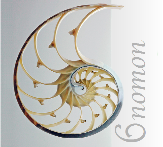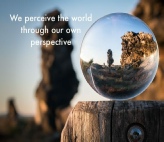



 NEXT
NEXT
 BACK
BACK
 Forum
Forum


Philosophical musings on Quanta & Qualia; Materialism & Spiritualism; Science & Religion; Pragmatism & Idealism, etc.




A philosophical worldview or belief system grounded on the 20th century discovery that Information, rather than Matter, is the fundamental substance of everything in the universe. It is intended to be the 21st century successor to the ancient worldviews of Materialism and Idealism. An Update from Bronze Age to Information Age. It's also a Theory – of – Everything that covers, not just matter & energy, but also Life & Mind & Love.
6. Form :
In the philosophy of Plato and Aristotle the active, determining principle of a thing. That Latin term was traditionally used to translate Plato's eidos, by which he meant the permanent reality that makes a thing what it is, in contrast to the particulars that are finite and subject to change.
https://www.britannica.com/summary/form-
7. Naïve Realism :
In philosophy of perception and epistemology, naïve realism . . . is the idea that the senses provide us with direct awareness of objects as they really are
https://en.wikipedia.org/wiki/Na%C3%AFve_realism
8. Substance :
In one sense, substances are the fundamental subjects; in another sense, a substance is the “cause of being” of a substance in the first sense. A substance in the second sense is the essence (the “what it is to be”), the form (morphê or eidos), of a substance in the first sense.
https://faculty.washington.edu/smcohen/SubstanceNote.pdf
Post 131. August 28, 2023
Creative Mind and Cosmic Order
Idealism vs Realism
Another dualistic distinction in philosophy involves the relationship between “Matter” and “Form”. Pinter says, “One of the most ancient dichotomies is that between form and substance. . . . It has matter and form ─ and these two things jointly determine what an object is. This belief is another example of naive realism ─ for in actual fact form cannot exist except in the view of a Gestalt observer.” Hence, Form⁶ does not refer to the object itself, but to how it is represented in the mind of the observer. Again, this may seem counterintuitive, but that’s only because the brain translates incoming data into images & ideas automatically, without any intention by the subject. Plato’s word for “form” was eidos, which is the root of our English term “idea”. So the form or shape we see is an idea projected onto the object of observation.
Another example of naive realism⁷ is the use of “substance”⁸ to mean “matter”. To the contrary, Aristotle defined his Greek term (ousia), translated as “substance”, by not referring to the material stuff of an object, but to its ideal defining essence, or isness. Therefore, the defining Form (design concept) of a thing is in the Mind, not the Matter. We recognize various objects with the same underlying pattern of inter-
The author, later in the book, introduces an additional tool for making sense of how we make sense of the world, especially the mystifying sub-
QBism is a statistical analysis of the fuzzy facts of Quantum physics, which are expressed in the form of Probabilities, not Certainties. The Bayes method re-
Blog Pos t 131
t 131 continued . . . . click Next
continued . . . . click Next 


9. Blank Slate :
The Modern Denial of Human Nature
The author makes a case against tabula rasa models in the social sciences, arguing that human behavior is substantially shaped by evolutionary psychological adaptations.
https://en.wikipedia.org/wiki/The_Blank_Slate
Those adaptations produce a brain that is a sponge for novel sensations, and a catalog of past experiences.
10. Mind Independent Reality :
That’s Pinter’s term for the presumptive reality underlying our perception and interpret-
We perceive the world, not directly, but through our personal perspective


Mind & the
Cosmic Order
How the Mind Creates the Features & Structure of
All Things
Charles Pinter
Mathematician & Philosopher
Due to biological imperatives, we are made to imagine that objects “really are exactly as we experience seeing them.